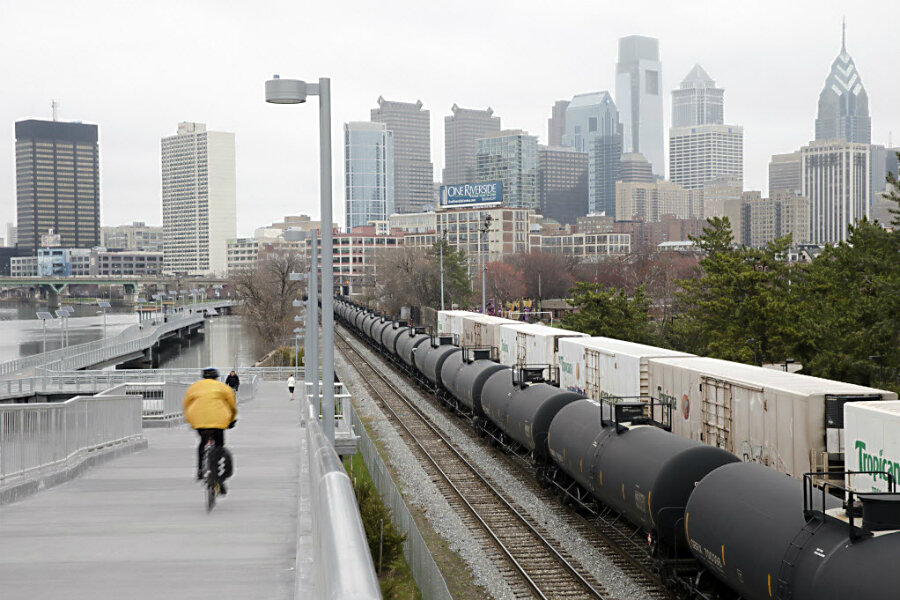How new oil transport regulations could increase rail safety
Loading...
As oil production has increased in North America, the risks associated with moving a higher volume of crude oil on an aging rail system have risen as well.
In February, VICE News reported on the number of rail accidents involving trains transporting oil had increased to 38 involving fires or ruptures on board in 2014, which was up from 20 in 2009. Inadequate tanker cars and increased traffic of oil-carrying trains were among the chief causes of accidents.
United States and Canadian regulators announced new safety requirements Friday, according to Reuters. Both governments sought to establish new standards which would force rail and energy companies to quickly phase out older tanker cars that are considered hazardous in the event of an accident. The oldest cars must be taken out of service within three years. Later generation models would have to be retrofitted to meet higher safety standards by 2020, the New York Times reported.
The highly anticipated new rules, two years in the works, were introduced in a joint press conference in Washington with US Transportation Secretary Anthony Foxx and Canadian transport minister Lisa Raitt, who said her country's regulations would match America's.
“I am hopeful the rail industry will accept this rule, and will follow this rule,” Transportation Secretary Foxx said at the news conference.
These new regulations are more rigorous than previous proposals. New regulations require cars to have reinforced hulls, head shields that will protect the ends of each car, electronic controlled pneumatic brakes (E.C.P.), and pressure-relief valves, and trains will operate at lower maximum speeds.
The rail and energy sectors are now expressing concern about the new regulations' tight deadlines, and the possible $2.5 billion price tag of implementing the changes. The rail industry has also balked at the mandate of E.C.P. braking, starting in 2021 for oil trains, The Times reported.
Cars build before October 2011, known as DOT-111, will be subject to retirement, and are not well-suited to carry flammable materials, despite being the workhorse of railroads' oil transport fleet, Reuters reported. The 2011 generation know as the CPC-1232 will have to meet the new DOT-117 standards by 2020, or be retired as well, according to the New York Times.
However some do not think the proposed regulations go far enough. On Thursday, seven US senators, including Sen. Charles Schumer (D) of New York, introduced a bill that would charge a $175 fee on every DOT-111 car used in an oil transport in hopes of speeding up their decommissioning.
“The good news is that the standards are predictable, but the bad news is that the phaseout time is too lenient,” Mr. Schumer told the New York Times. “Our railroads are changing, and are getting much busier because of all this oil business, and they will have to adapt. They can’t do it the old way.”








